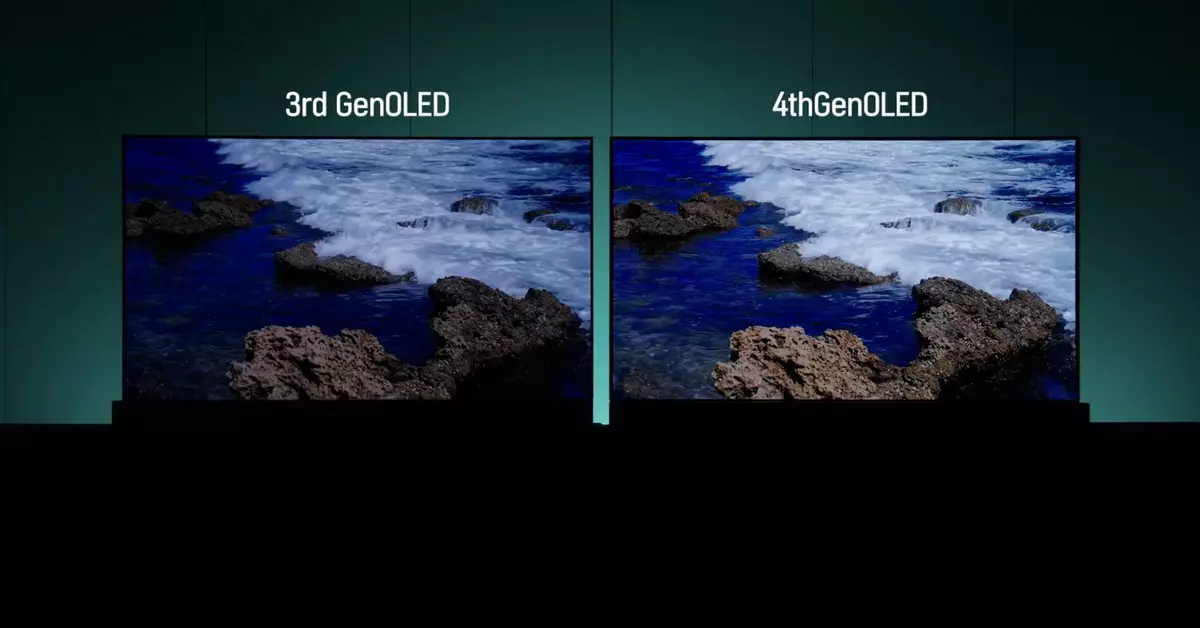The landscape of display technology continues to evolve at an unprecedented pace, with companies like LG Display and Panasonic leading the charge in innovating OLED screens. The Consumer Electronics Show (CES) 2025 marked a significant moment in which LG Display opted for a subtle approach by not showcasing its latest advancements in the usual grand fashion. Interestingly, it was Panasonic that took center stage to unveil the intricate details of LG Display’s upcoming OLED technology, revealing an intriguing collaboration between manufacturers. This article delves into LG Display’s new four-layer tandem OLED design and what this could mean for consumers looking for cutting-edge viewing experiences in their home entertainment systems.
At the core of LG Display’s new technology is its innovative four-layer tandem OLED design, which promises significant improvements in brightness and image quality over its predecessors. This new panel is engineered to be 33% brighter than previous generations, boasting an impressive maximum brightness of up to 4,000 nits. This leap forward positions it as a leader in the ongoing “brightness wars” within the OLED sector, where various manufacturers are vying for supremacy in display brightness and overall picture quality.
One of the most exciting aspects of LG Display’s new development is the implementation of a Primary RGB Tandem structure. This proprietary technology involves multiple independent layers of RGB elements working harmoniously to produce light. Previously, LG Display utilized a three-layer design that combined two layers of blue with a single layer containing red, green, and yellow. The latest enhancement introduces additional blue layers and separates red and green layers, fundamentally altering how light is generated. This sophisticated layering allows for significantly enhanced light output, ensuring incredible vibrancy and depth in image reproduction.
In the competitive world of high-end displays, the rivalry between LG Display and Samsung is palpable. Samsung has been making headlines with its standout QD-OLED technology, focusing on glare-free displays that cater to users seeking optimal viewing experiences in varied conditions. However, LG Display has chosen to maintain a traditional glossy finish, albeit one enhanced with “ultra-low reflective technology” designed to mitigate distracting glare. This decision raises questions on consumer preferences; while gloss may provide deeper blacks and richer colors, it often comes at the cost of visibility in bright environments.
In terms of energy efficiency, LG Display claims that its fourth-generation OLED technology improves color brightness, achieving significant milestones with values reaching 2,100 nits—up 40% from previous models. However, these peak brightness figures should be interpreted with caution. It remains to be seen whether manufacturers will fully exploit these capabilities in their consumer-grade televisions, as they have a history of limiting performance to extend the lifespan of the product and ensure a consistent user experience.
For gaming enthusiasts, these advancements provide fodder for excitement. OLED technology is renowned for delivering perfect blacks, exceptional contrast ratios, rapid response times, and superior viewing angles—attributes that serve to enhance the gaming experience. With an increasingly competitive market, manufacturers are challenged to go beyond just increasing brightness; they must also ensure that these features are maintained or improved.
While the elite OLED panels may come with premium price tags, many consumers still consider them worth the investment, as they deliver a visual experience that transcends traditional display technology. As more households integrate sophisticated home theater systems, the demand for top-tier displays is expected to rise, urging manufacturers to continue pushing technological boundaries.
LG Display’s new tandem OLED panel signifies a momentous leap in display technology, blending innovation with practicality. While companies like Samsung innovate with glare-reducing technology, LG Display’s reliance on its unique layering technique could redefine consumer expectations. As OLED technology continues to advance, consumers can look forward to experiencing brighter, more vibrant, and technically sophisticated displays in their homes. With the convergence of advancements in energy efficiency, responsiveness, and color quality, the future of home entertainment appears undeniably promising, with innovations that are likely to set new benchmarks in the industry.

